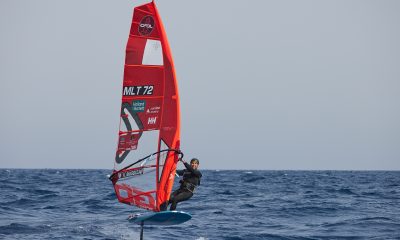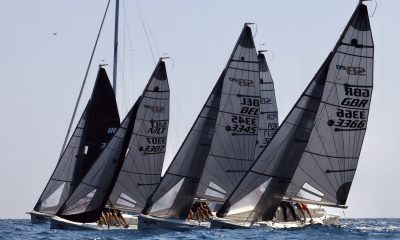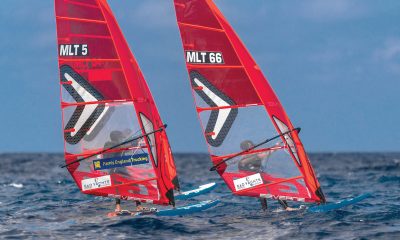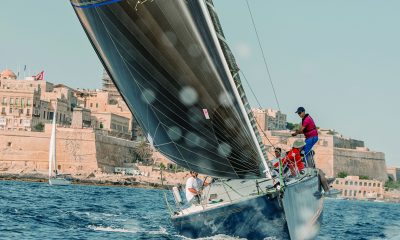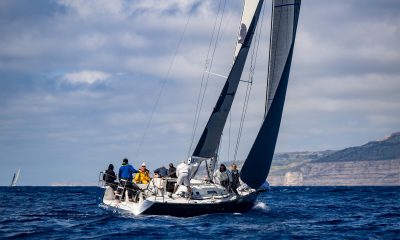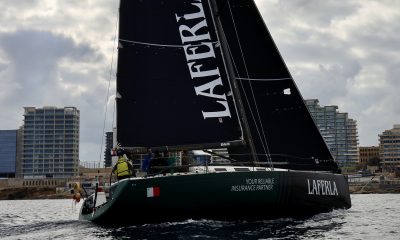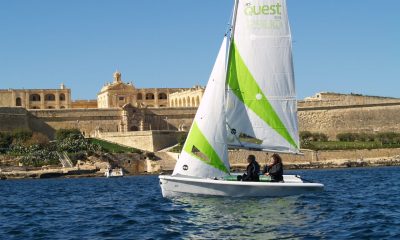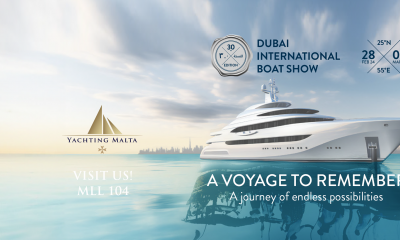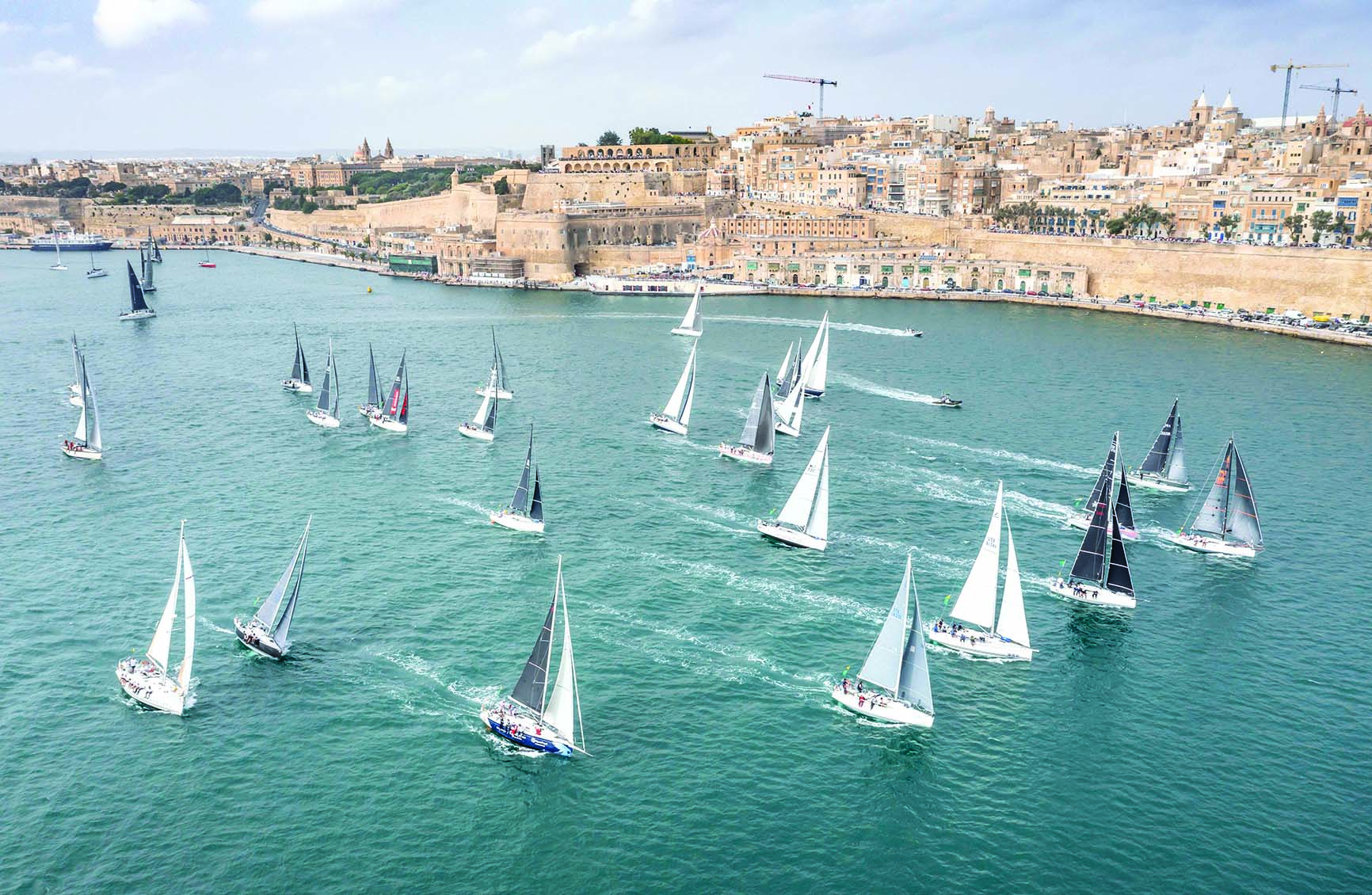
A global fleet has once again answered the call of the Rolex Middle Sea Race, with the 43rd edition attracting a fleet of 120 yachts from 25 countries, including Australia, New Zealand, Canada and the United States, as well as most of Europe.
Five maxi multihulls and two maxi monohulls are expected to lead the charge around the 606 nautical mile course, albeit at a more gentlemanly pace than last year.
The prevailing forecast is for a light wind race, in complete contrast to the dream conditions of 2021. No matter, the challenge and attraction of offshore racing is as much mental as it is physical, and the Rolex Middle Sea Race has a reputation for always delivering whatever the weather.
Experienced navigator and race router, Mike Broughton delivered the Weather Briefing to the expectant crews at the pre-race Skipper’s Meeting. “High pressure is dominating the central Mediterranean, which makes for light wind across the course,” he advised.
“There will be no records this year, but on the plus side there should be no rain.
The first sections of the course all the way up to the Messina Strait look extremely tricky, but the front runners should expect decent breeze as they exit the Strait and head to Stromboli.
“This wind will be on the nose, as will the medium, mid-teens breeze likely to be encountered from the Egadi Islands down to Lampedusa on the western side of the course.”
In other words, this is going to be a test of patience, mental resilience and a determination to eke out every tenth of a knot possible.
Multihulls
Headline acts are the five former MOD70 trimarans led, in terms of experience at least, by Giovanni Soldini’s well-travelled Italian entry Maserati Multi70.
A three-time line honours winner in 2016, 2018 and 2020, Riccardo Pavoncelli’s Mana was second on the water to Maserati in 2020, but a winner under MOCRA time correction.
Alexis Barrier, the French professional sailor who competed in the last Vendée Globe is among the Mana crew, along with Paul Larsen of Sailrocket fame.
“I have done the race three times before on much smaller, slower boats than the MOD70. The winds were strong and the waves big. It won’t be the same at all this time,“ she explained. “Maybe we’ll break the record for the slowest race ever, although I hope not!”
The three lesser-known quantities, in terms of this race, are Frank Slootman’s Snowflake (USA) with Gavin Brady leading the crew, Erik Maris’ Zoulou (FRA) with Sidney Gavignet and Axciss entered by Italian sailor, Cosimo Malesci.
Maxi Monohulls
On paper, the monohull line honours contest is between the 30.48 metre Farr-designed Leopard 3 and the 28.3m Judel & Vrolijk drawn Bullit. Leopard 3 (ESP) has past pedigree, first home in 2009 and runner-up in 2017. The crew includes Will Best as navigator.
“The weak high pressure over the centre of the Med is not moving anywhere fast,” confirmed Best.
“The big thing for us is to get to the southerly flow off the western end of Sicily. If you get to that first you should be fine, but getting there will be the most stressful part. It will be hard sailing to start with, working every puff for every inch.”
Andrea Recordati’s Bullitt is on its debut race, but features a talented team including ocean race winner, Joca Signorini. Signorini explained a little background to the boat: “It’s a Wally Yacht more used to inshore racing, but the team has put a lot of work into making her ready for the Rolex Middle Sea Race. We have a light forecast, which may suit us, and we are expecting a big fight with Leopard. It’s going to a long race, and we have to keeping working hard throughout.”
The most interesting, and undoubtedly more significant, battle is the one for the overall monohull win under IRC Time Correction, rewarded with the magnificent Rolex Middle Sea Race Trophy. The number of standout yachts in this year’s IRC category is remarkable and picking likely winners is a lottery.
‘To finish first, first you have to finish’ is the overworn saying in any race-based sport. In yachting, one can add ‘first in class’.
50 foot and above
Among the 50 footers, Carl-Peter Forster’s Red Bandit, a TP52, could be one to profit from the forecast conditions. Forster’s crew of young sailors from the Bayerischer Yacht Club have proven their inshore credentials winning the big boat class at this year’s Copa del Rey and finishing second overall. Whether they can translate the potential into a 600 mile classic remains to be seen. Forster is a fan of both the offshore discipline and the race itself. “It will be challenging with a difficult forecast, very different to last year,” he said. “600 nautical miles is a step up in experience for this young team, but I have confidence in them. We are looking forward to the test.”
40 foot and above
Lower down the ranks, there are several contenders among the 40-plus footers. The Maltese have a strong showing. Obvious picks include the two-time winning Podesta clan on Elusive 2 and the two-time winning Artie III team led by Lee Satariano and Christian Ripard, who also won the race with Bigfoot in 1996.
A potential dark horse is Jonathan Gambin’s Dufour 44P Ton Laferla. Third overall in 2020 and on his 16th circumnavigation, Gambin remarked: “I’m looking forward to the race. It is going to be long, so judging the supplies required is key. We are well set up and the crew is well prepared and ready to be both patient and determined.”
James Neville, RORC Commodore and owner of the HH42 Ino XXX is here for a second time. Neville is impressed with the yachts gathered. “It is a simply a must do race. There is a phenomenal fleet here, really off the scale. Some terrific competition among our close rivals and among both bigger and smaller boats,” he commented.
30 foot and above
The smallest, slowest yachts may have reason to be more concerned than their bigger rivals. So often a light wind start is followed by a strong wind finish that sweeps the slower yachts home. There is no expectation of this scenario.
For the five-man French crew on Raging Bee, a JPK 1010 led by Jean-Luc Hamon there is no illusion about the enormity of the task ahead. Philippe Guivel is a trimmer on the 10m/30 footer.
“With light wind we know it is going to be difficult,” he explained. “Two years ago, we were very happy with the result, but this time we have come back to win our class. We will have to be accurate with our weather forecasting, and we are being very attentive to this.”
This end of the fleet features several double-handers, such as the Sun Fast 3300 Red Ruby sailed by Jonathan McKee and Alyosha Strum Palerm (Uinted States), Ludovic Gérard’s Solenn for Pure Ocean (FRA), Chris Opielok’s German entry Rockall and Ondrej Vachel’s Czech entry Mary S – Vachelboat. These crews will need to conserve their energy as well as their supplies.
The Maltese also form part of the equation, with the two Jarhead Foundation entries, the J/109s JYS Jan and JYS Jarhead, crewed by young local sailors. Andrew Agius Delicata and Matthew Gabriele, with Vivace, may be pleased they chose this year to race fully crewed rather than two handed as previously, while Sebastian Ripard, skipper of the J/99 Calypso will need all his considerable experience of the race to get around.

World Cup News
-
FIFA World Cup
/ 4 days agoSaudi oil giant Aramco agrees major FIFA sponsorship deal
Saudi Arabia’s state oil giant Aramco and world football governing body FIFA on Thursday...
By AFP -
FIFA World Cup
/ 1 month agoSon scores but Thailand hold South Korea in World Cup qualifier
Son Heung-min scored but South Korea were held 1-1 at home by Thailand in...
By AFP -
FIFA World Cup
/ 2 months agoJapan-N. Korea World Cup game to stay in Pyongyang, JFA says
Japan’s World Cup qualifier against North Korea will be played in Pyongyang as planned...
By AFP -
FIFA World Cup
/ 2 months agoGerman ex-FA bosses on trial over World Cup tax evasion
Three German ex-top football officials went on trial on Monday in a 13.7-million-euro ($14.8...
By AFP

BOV Premier League
Watch: ‘Spartans’ mindset crucial in title triumph’ claims Zauri

BOV Premier League
Final relegation spot to be decided on Friday with four-match programme

English Premier League
Ake confident Man. City can overhaul Arsenal in title race

Winter Olympics
Watch: Geisenberger wins sixth Olympic medal to tie luge record






















